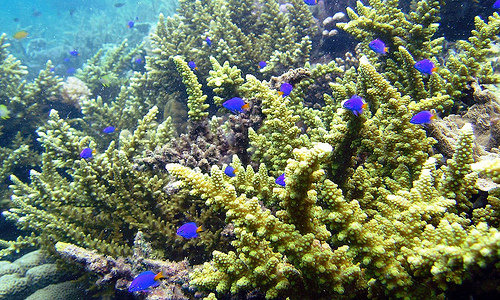January 1, 2012


LOS ANGELES — The California coast offers its visitors fishing, boating, public beaches, and other fun activities.
Today, throughout the southern California coastal area there will be a grand opening of a new series of Marine Protected Areas (MPAs). A science-based network, the new MPAs were designed by local fishermen, conservationists, and business leaders to help protect California’s most productive ocean areas while still leaving nearly 90 percent of the coast open for fishing endeavors. (Photo by Dana Roeber Murray, flickr)
[nggallery id=86 template=carousel images=4] [imagebrowser id=86]
By Debra Atlas January 1, 2012
LOS ANGELES — The California coast offers its visitors fishing, boating, public beaches, and other fun activities.
Today, throughout the southern California coastal area there will be a grand opening of a new series of Marine Protected Areas (MPAs). A science-based network, the new MPAs were designed by local fishermen, conservationists, and business leaders to help protect California’s most productive ocean areas while still leaving nearly 90 percent of the coast open for fishing endeavors.
“January 1 is a real turning point for southern California’s ocean,” said Greg Helms of the Ocean Conservancy. “By protecting hot spots like South La Jolla, Point Dume and Laguna, we are charting a course towards greater sustainability, and that means better fishing, diving, kayaking, tidepooling, and birding for our children.”
According to a 2009 study, more than 90 percent of coastal recreation in southern California is considered “non-consumptive,” which includes activities such as scuba diving, whale watching, going to the beach, or surfing. California’s pristine beaches and ocean waves generate $22 billion in revenue and drive more than 350,000 jobs every year.
The California coast also is home to marine life, many of which are listed as threatened or endangered species. Consistent with California’s commitment to wildlife conservation, a growing network of underwater MPAs are being created as part of a statewide system that ultimately will run the length of California’s 1,100-mile coastline from Mendocino in the north down to the Mexican border.
Inspired and mandated by the groundbreaking Marine Life Protection Act (MLPA) adopted in 1999, the purpose of these MPAs is to protect “the state’s marine life and habitats, marine ecosystems, and marine natural heritage.” The MPAs also serve to improve recreational, educational, and study opportunities provided by these ecosystems while ensuring minimal disturbance by humans.
Science has shown that that the biodivesity of MPAs can be significantly higher than areas outside the protected areas. The Channel Islands National Marine Sanctuary, created in 2002, is an excellent example of conservation in action. A five-year study shows that rockfish numbers in the Channel Islands sanctuary were up by 50 percent, that their size has increased by 80 percent, and that the distribution, abundance, and endurance of kelp beds have increased. See the marine life slideshow here, courtesy of CalOceans.
The majority of the new MPAs are located adjacent to public beaches and state parks, creating opportunities for education, research, and for recreation-based activities.
Several of the new protected areas—Kashtayit, just west of Santa Barbara, and Matlahuayl near San Diego—were designed to protect and showcase tribal cultural history that is based in the south coast region.
“The ocean is more than just a source of fish,” says Diane Castaneda of WILDCOAST. “It’s a vital piece of our shared natural and cultural heritage. Our community has been overwhelmingly supportive of marine protected areas and is excited to help spread the word and study their results.”
To help further the celebration of the opening of these new MPAs, on January 21 aquariums across southern California will host an Underwater Parks Day, featuring special exhibits of the newly created MPAs. These exhibits will include maps and contact information for those who wish to get involved or visit these special marine areas.
Check out more articles Debra Atlas.
© 2012 SCGH, LLC.
]]>